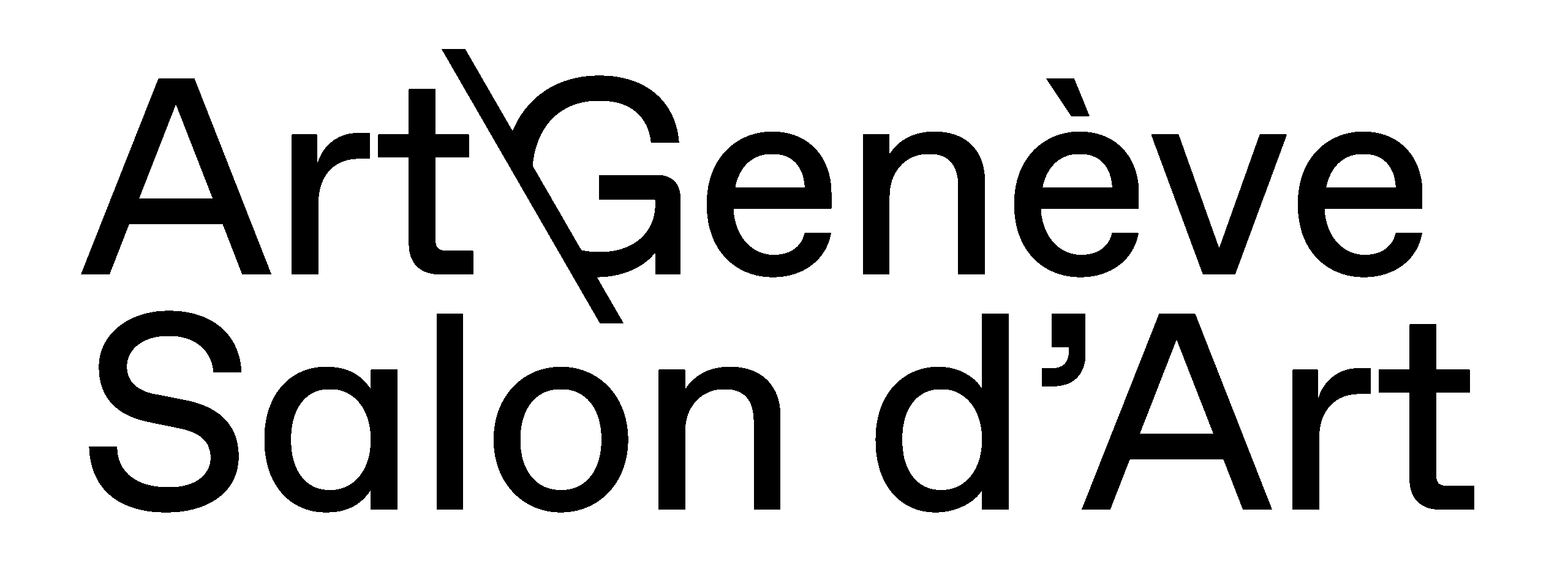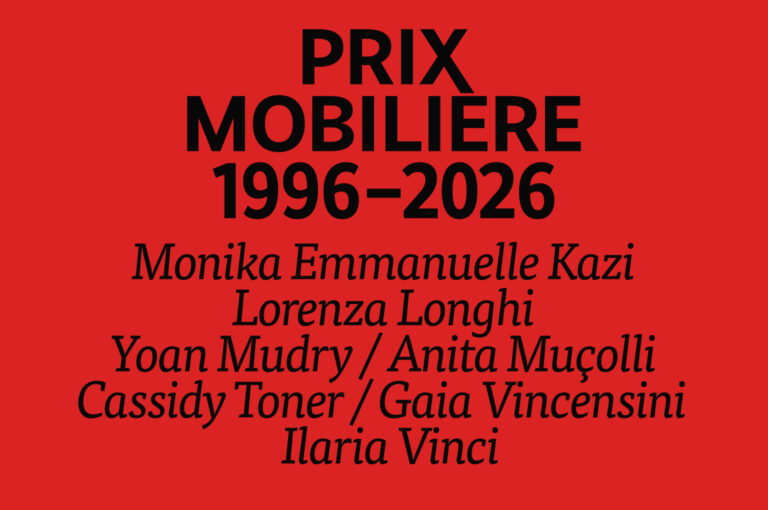Prix Mobilière
The nomination committee
The nominees
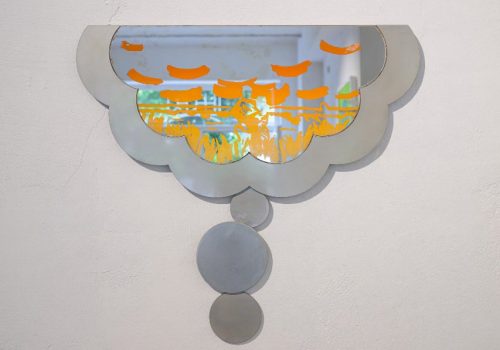
Monika Emmanuelle Kazi
Monika Emmanuelle Kazi (born in 1991 in France (FR), lives and works in Geneva)
« Monika Emmanuelle Kazi’s work is characterised by a unique reflection on memory and fragmented narratives – both personal and collective – and by an aesthetic that is both restrained and expressively generous. Imbued with a delicate relationship to nostalgia, her artistic practice is permeated with colonial, family and emotional histories, which she explores through installation, writing, video and performance. It is between her country of origin, Congo, and the places where she was born and raised – Paris, Brussels and Geneva – that her work unfolds in a form of friction between spaces, gestures and memories. She draws on recurring themes and objects such as water, powdered milk, board games, architecture and domesticity, as intimate and political markers. Resisting any form of fixity, her practice reveals an embodied, porous and ever-evolving memory. »
Camille Regli

Lorenza Longhi
Lorenza Longhi (born in 1991 in Lecco, Italy, lives and works in Zurich)
« Lorenza Longhi’s works create beauty, but at the same time express criticism. How are these two positions compatible? The artist is interested in formal conventions, citing design classics, office furniture and evoking the layout of public spaces. In her paintings and installations, she explores how our behaviour varies depending on the context, for example in a shop, at the office or in an exhibition hall. In line with current trends, the artist works according to the “do it yourself” principle and often finds her materials in flea markets or by the roadside. Aesthetically, Lorenza Longhi’s works have nothing to do with DIY and are more reminiscent of Minimal Art. Inspired by conceptual art, they critically question style, good taste and the subtle differences that distinguish us from others. Longhi, for example, arranges benches in the exhibition space that can be interpreted both as sculptural elements and as seats – as viewers, we thus also become part of the exhibition. The artist combines institutional critique with DIY strategies in a stimulating way, both visually and spatially as well as intellectually. »
Fanni Fetzer
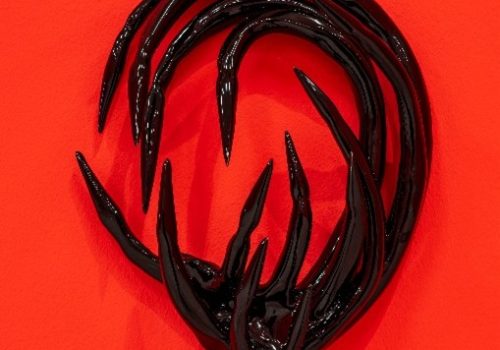
Anita Muçolli
Anita Muçolli (born in 1993 in Burgdorf, Switzerland; lives and works in Basel)
« Anita Muçolli is interested in the psychological impact of objects, buildings and spaces. She takes existing objects and transplants them into a new constellation or transposes them into a new material or a new, refined formal language. This process of reinterpretation and intensification allows her to focus her attention on the expressive qualities of spaces and objects, as well as the social and political objectives underlying their design. In doing so, Muçolli challenges the blind belief in progress in the West, which is based on the conviction that all of humanity’s problems can be solved through ever more innovative technologies. What appears, on the one hand, to be a harmonious, efficiency-oriented design, reveals, on the other hand, an increasingly obvious loss of spirituality, emotion and ethics. This mixture of optimism, desire for performance, but also anxiety is translated into ambivalent abstract forms that Anita Muçolli explores, focusing on the problem of the disappearance of human dimensions in our societies as the price to pay for technological perfection. »
Kathleen Bühler
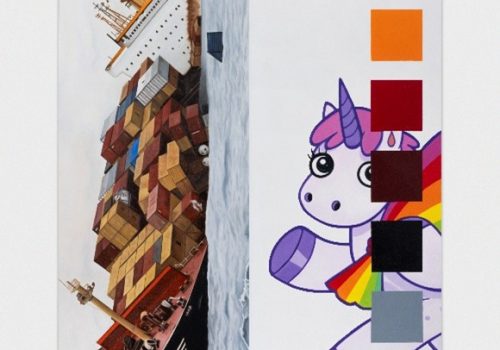
Yoan Mudry
Yoan Mudry (born in 1990 in Lausanne, Switzerland; lives and works in Geneva)
« Yoan Mudry uses the flood of images and texts that threatens to engulf us at every moment. He stops, or rather interrupts, the universal digital flow according to a random system and freezes popular references that overlap in hyperrealistic acrylic and oil paintings. As our brains seek meaning even where only absurdity reigns, and easily lose their way, Mudry maps out for us the passage to this imponderable dimension of ‘the tension between the figurative and the abstract, the intuitive and the exact, the human and the machine’ (Yoan Mudry). In his Reflections on Painting, it is the bare surface that is reflected, not the depth of thought. In doing so, he creates a liberating effect. Wobbly shoes and singing Bialetti Moka coffee makers draw us into a speculative sphere where apparent nonsense seems far more trustworthy than the omnipresence of grotesque interpretative sovereignty. »
Juri Steiner
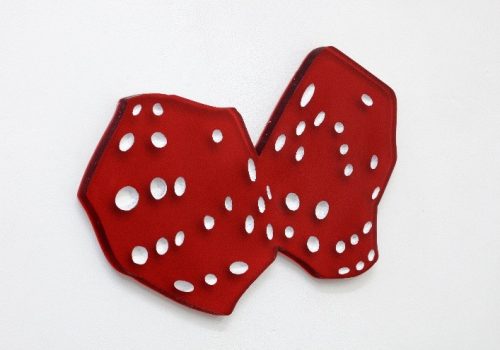
Cassidy Toner
Cassidy Toner (born 1992 in Baltimore, USA, lives and works in Basel)
« What I appreciate about Cassidy’s work is that moment when you don’t know whether to laugh or cry – and sometimes both at once. His comments are so sharp that they cut to the heart of the social reality in which we live. They pierce the “mask of skin” and penetrate to the deepest layers of our being: they scratch the veneer of our certainties, tear the fabric of our habits, our “bloodthirsty” and implicitly normalised forms of cohabitation. Cassidy knows how to reach these dark areas with ‘corrosive irony’ – surgical precision – without ever losing her sense of humour, with just the right amount of ‘bad faith’. She creates art that disarms us with intelligence and captivates us with a vulnerability hidden beneath a witty remark. »
Pedro Wirz
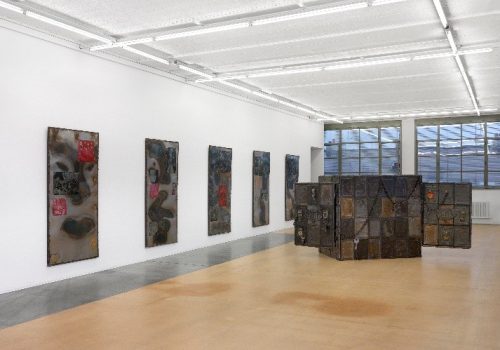
Gaia Vincensini
Gaia Vincensini (born in 1992 in Geneva, Switzerland; lives and works between Geneva and Paris)
« Gaia Vincensini possesses impressive qualities for a young artist: a well-established practice, inspired by a feminine artistic heritage that encourages her to explore multiple techniques – from ceramics to film, textiles, engraving and drawing. She constantly moves between individuality and community, which allows her to draw inspiration from exchanges and experiment as an independent artist or as part of a collective (she works with the Inner Light collective, founded in 2018). Gaia has skilfully used dialogue with researchers from other disciplines to fuel her research into gold, alchemy and the marvellous. In addition, she has skilfully and humorously explored social criticism that draws on contemporary and distinctly Swiss themes, such as banking secrecy, power dynamics, financial speculation, the commodification of time and luxury watchmaking, somewhere between reality and fantasy. »
Joëlle Comé
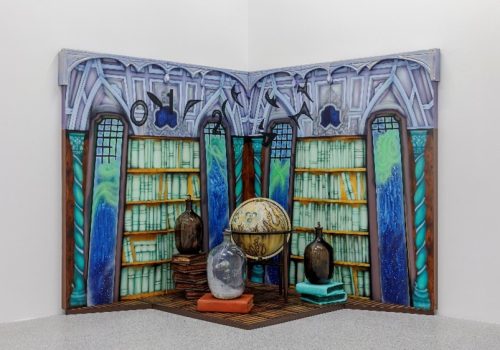
Ilaria Vinci
Ilaria Vinci (born in 1991 in Cisternino, Italy, lives and works in Zurich)
« Ilaria Vinci’s immersive installations and mixed media works explore the dynamics between popular culture and the formation of the collective imagination. By combining elements borrowed from cinema, theme parks, commercial design and derivative objects, she constructs a language that is both sensory and conceptual. Her “fantasy zone”, as she calls it, evokes a porous reality, where emotions, mythical figures, simulacra objects and industrial forms overlap. Through fragmented narratives and a rigorous aesthetic, Vinci creates tension between fiction and everyday life, desire and mechanisms of standardisation. Her work engages in a critical and playful reflection on the ways in which mass-produced images, objects and narratives contribute to the formation of contemporary subjectivities. »
Léa Fluck
